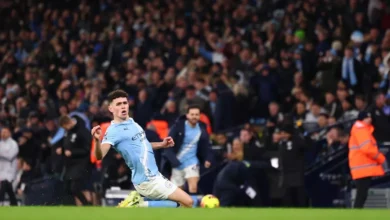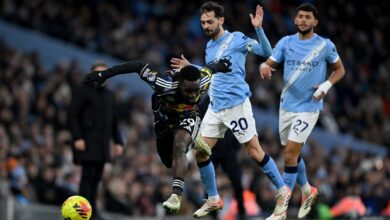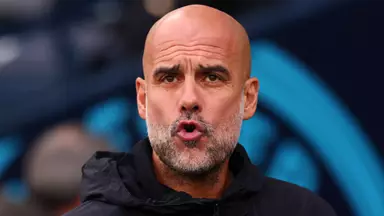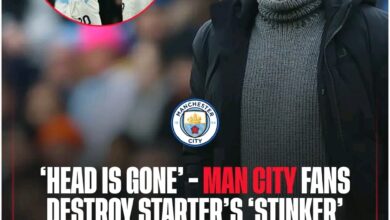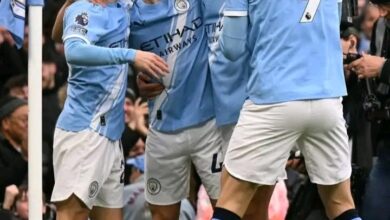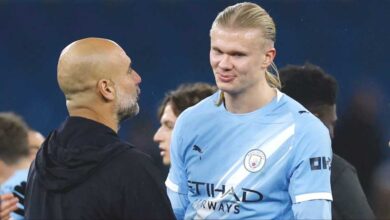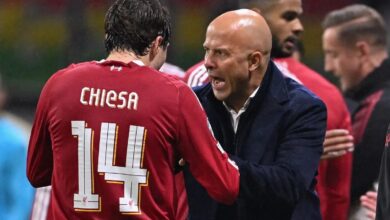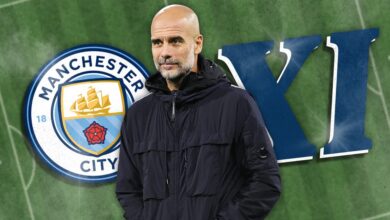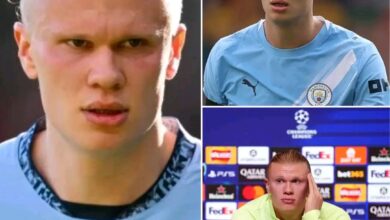Manchester City’s Squad Dilemma: Why Pep Guardiola May Be Forced to Sell Savinho
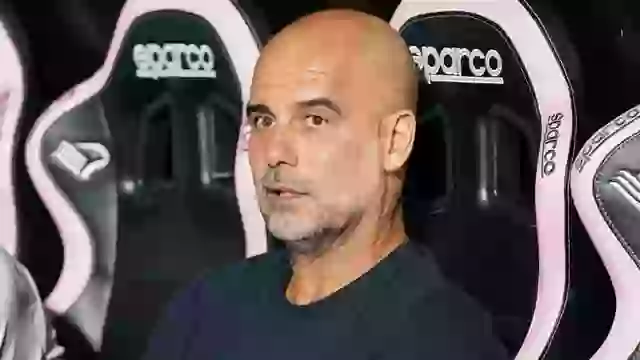
When Manchester City lifted the Champions League in Istanbul in 2023, few could have imagined that only two years later Pep Guardiola’s side would face a summer dominated not by talk of new signings but by the need to cut players. Yet that is precisely the situation at the Etihad Stadium as the new season approaches.
City’s squad currently stands at 32 senior players following a busy transfer window, and while depth has always been one of Guardiola’s greatest assets, it now presents a problem. UEFA regulations for the Champions League limit squads to 27 players, while the Premier League’s homegrown rules also add complications. For the first time in years, City’s biggest challenge is not who to buy, but who to let go.
The headline name in the debate is perhaps the most surprising of all: Savinho.
The New Reality of UEFA and Premier League Rules
To understand the situation, it is important to first look at the regulations.
UEFA allows each competing club to register a maximum of 25 senior players for the Champions League, plus two additional “List B” slots that can be used for under-21s who have been at the club for two years or more. Manchester City, however, have a number of new signings, several of whom do not count as homegrown players. That means they effectively need to cut at least five senior players to fit within the rules.
The Premier League is more flexible in terms of squad size but has its own restrictions around homegrown quotas. Each 25-man squad must include at least eight homegrown players. For City, this requirement is less severe but still requires careful management. At present, the club has more than enough players to choose from, meaning exits are inevitable.
This is not unusual for top clubs – Real Madrid, Chelsea, and PSG have faced similar dilemmas in the past – but it is unusual for City, who are generally careful with squad planning. Guardiola has often preferred to work with a tight group, maximising rhythm and cohesion. A 32-man squad is simply too big for his liking.
The Transfer Activity that Created the Problem
After a rare trophyless season in 2024/25, City responded by investing heavily. Rayan Cherki arrived from Lyon to add creativity, Rayan Aït-Nouri was brought in from Wolves to bolster the left side, and Tijjani Reijnders joined from AC Milan to strengthen midfield options. On top of that, Norwegian teenager Sverre Nypan was signed as one for the future, while goalkeepers James Trafford and Marcus Bettinelli came in to refresh the department.
These additions, combined with the return of several loanees, swelled the numbers. Guardiola, who has always stressed the importance of balance, now finds himself under pressure to trim.
Names like Kalvin Phillips, James McAtee, and Stefan Ortega were quickly identified as likely departures. Jack Grealish, meanwhile, is closing in on a loan to Everton after a difficult season. Those were expected moves. What was not expected was the emergence of Savinho as a candidate for exit.
Who is Savinho?
For fans who only started following him last season, Savinho may feel like a sudden breakout name. But his rise has been carefully planned.
Born in Brazil, Savinho (full name Sávio Moreira de Oliveira) came through Atlético Mineiro’s youth ranks before moving to Troyes, part of the City Football Group, in 2022. From there, he spent a season on loan at Girona in La Liga, where he caught the eye with his explosive pace, direct dribbling, and ability to stretch defences.
Guardiola and City’s hierarchy saw enough to integrate him into the first-team squad last season. In his debut campaign in Manchester, Savinho played 48 games across competitions – a remarkable total for a 21-year-old – and scored three times. His role was often rotational, coming off the bench to inject speed and energy, but he was trusted in big fixtures and showed promise of becoming a long-term contributor.
Guardiola’s Assessment
Guardiola himself has praised Savinho’s qualities.
“He is so fast in transitions, so fast, and he can do 30 or 40 games,” the City boss said last season. “I know he can play every three or four days. This is one of the details we look at – how reliable the player is to play every three or four days. Otherwise, he cannot play in the big teams because the demand is like that. I had the feeling he is so strong to play regularly – a lot of games, a lot of minutes.”
That kind of endorsement makes the winger’s potential exit all the more surprising. Normally, when Guardiola singles out a young player for praise, it signals trust and long-term involvement. Yet the reality of squad size restrictions means even players with potential cannot be guaranteed a place.
Tottenham’s Interest
It is in this context that Tottenham Hotspur have emerged. New manager Thomas Frank, preparing his team for a return to the Champions League, has identified wide attacking reinforcements as a priority.
Savinho fits the bill perfectly. Quick, direct, versatile, and still young enough to develop, he represents both immediate help and long-term value.
According to David Ornstein of The Athletic, Spurs are in talks with City over a fee in the region of €50m. Such a figure reflects not only Savinho’s potential but also the fact that City do not need to sell from a financial perspective – this is about numbers, not cash flow.
For Tottenham, it would be a significant statement. The club has often looked to add young, dynamic attackers but has sometimes missed out on prime targets. Securing Savinho would not only boost their squad but also underline their ability to compete for talent at the top level.
City’s Balancing Act
For Guardiola, the dilemma is clear. On one hand, he rates Savinho highly and would prefer to continue his development in Manchester. On the other, the regulations do not allow unlimited retention, and the club must act.
The question then becomes: who is most expendable? Phillips and McAtee are easier decisions – one has struggled to adapt, the other is surplus in a packed midfield. Ortega could leave if City trust Trafford to back up Ederson. Grealish’s loan is designed to reset his career.
Savinho, however, falls into a different category. He is young, talented, and improving. Selling him would feel like sacrificing part of City’s future. Yet that may be the cost of ensuring compliance.
Lessons from Other Clubs
City are not alone in this situation. Chelsea have spent the past two summers trying to downsize after years of lavish spending created a bloated squad. PSG, too, have faced difficulties balancing depth with harmony. Even Real Madrid, famed for their galácticos, have had to make tough calls on young players when numbers became unsustainable.
The key lesson is that even the biggest clubs cannot keep everyone. At some point, tough choices are necessary, and often those choices involve parting with players who are good enough to contribute but not guaranteed regular minutes.
What Savinho Offers Spurs
From Tottenham’s perspective, Savinho is almost tailor-made for their current project.
Thomas Frank’s system relies heavily on quick transitions, pressing, and pace in wide areas. Savinho offers all three. His ability to stretch play would complement the more technical creativity of James Maddison, while his willingness to press aligns with Frank’s philosophy.
Moreover, Spurs are building a younger core. With players like Destiny Udogie, Micky van de Ven, and Pape Matar Sarr already in place, adding a 21-year-old Brazilian with Champions League experience would fit the broader strategy.
The Wider Impact on City
Should Savinho depart, it would raise further questions about City’s long-term planning. Some fans may wonder why a player who was trusted so often last season is being sold just as he begins to settle. Others will point out that City’s model – buying, developing, and occasionally selling for profit – is designed to keep the squad fresh and financially stable.
A €50m sale would represent a significant return on a player who cost relatively little to acquire. It would also free up a squad slot, allowing Guardiola to focus on those he considers more central to his plans.
The risk, of course, is that Savinho develops into a star elsewhere – something City have experienced before with the likes of Jadon Sancho.
What Next?
As of mid-August, negotiations between City and Spurs are ongoing. Nothing is agreed yet, and there remains a chance that other exits could ease the pressure and allow Savinho to stay. Much depends on the timing of departures like Phillips, Ortega, and Grealish.
For Guardiola, though, the reality is unavoidable: at least five players must go before the Champions League squad is submitted. That means surprises are almost inevitable.
Conclusion: The Human Side of Squad Management
Football fans often view transfers purely in terms of quality – who is good enough, who is not. But as City’s current situation shows, the rules of the game mean even good players can be forced out.
Savinho’s potential sale is not a reflection of failure. On the contrary, it underlines how well he has done to become a valuable asset so quickly. It also highlights the brutal choices managers must make when balancing depth, regulations, and the future.
For City, the summer of 2025 will be remembered less for who arrived and more for who departed. For Savinho, it may mark the moment when his career took a decisive turn – from a promising role at the Etihad to a central role in North London.
And for Guardiola, it is another reminder that in football, success is not only about building squads, but also about trimming them.






